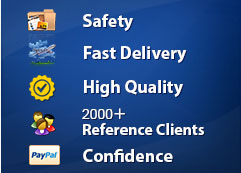Heat press beginners guide – common questions
Heat press guide for the beginner. Buying your first heat press or just starting with heat transfer technology – read this for some general knowledge that you may be afraid to ask for.
How much power do I need for a heat press – can I just plug it in at my house?
Most heat presses pull anywhere from 8.5-14.5 amps and use a standard 120v US outlet (unless you special order the press for 220v). Be sure to dedicate a 15 -20 amp circuit to the heat press – yes you can plug in something like a small vinyl cutter and laptop with the heat press, but it is a good rule of thumb not to plug anything else on this circuit.
When I’m not using my heat press should I leave it opened or closed?
Good question – the answer will vary depending on who you ask, but I recommend leaving the press in the open position to prevent any scenario where it may be bumped and want to pop up and cause injury. Of course, you must leave it open during heat up, cool down and anytime it is on -other than when you are completing an application of course.
Do most people leave their heat presses on all day?
This depends on who you ask – a lot of retail shops that do on demand printing will leave the press on the entire day. Smaller home based businesses or those who schedule out their daily work will just heat it up when needed. On average a heat press take about 15-20 minutes to heat up and about twice this amount of time to cool down. Be prepared to pay a higher electric bill if you leave your press on all day – ultimately this should be factored into your overhead costs.
What accessories do I need for my heat press?
This depends a lot upon the types of applications you will want to complete, but a good starting point is a set of print perfect pads for accomodating items with uneven pressing areas (seams, zippers etc.). I’d also recommend a pad protector for the bottom of the press – this makes it easier to slide garments on and off of the press and saves you from replacing an expensive bottom pad 5 years from now. Another good thing to have is some form of alignment tool – I’ve always used a perfect transfer tool. And lastly, you’ll have to have some form of cover sheet – reusable cover sheets,craft paper and silicone sheets are a few options. Each cover sheet will leave a slightly different finish on your garment. Oh – and I recommend one more thing – get a lint roller to keep by your press – this will help to keep unwanted fuzz, lint etc, from getting underneath your transfer.
How do I clean my heat press if I get something on the heater?
The best way to clean a press is with a non abrasive industrial hand cleaner (ie. Gojo) and an old t-shirt or clean cloth. Wipe the press down will cool and hot for best results – be careful not to burn your hand when wiping hot.
How do I make sure that my heat press is heating accurately?
Pick up some temperature strips and lock the press down on them to make sure the readout you are getting matches the temperature on the heater. It is critical to have a heat press that heats accurately and evenly in all areas. This is often dependent on the way the heating element is wound throughout the top platen – too much distance between each element and you can begin to see issues with even temperature.
How do I know what to set the temperature and time for on my heat press?
Simply put – the heat press is your oven. The transfer is your frozen pizza. Read the directions on the frozen pizza so you know what to set your oven for. Certain transfers will offer ranges to be adjusted with the accomodation of more heat sensitive fabrics.
What about pressure?
Pressure the most overlooked and confused piece of the pie when speaking of heat applied graphics. To achieve repeatable accuracy on any type of transfer you needs to have accurate time, temperature and pressure. Most heat presses change pressure by turning a knob on the press or by adjusting the maount of air pressure coming in for air presses. Be sure that your pressure is adjusted to deliver the recommended pressure that the transfer requires. Changing from a t-shirt to a hoodie effects pressure – so set the pressure with your item loaded in the press. Pressure is a guessing game on a lot of heat presses – it is adjusted and measured strictly on how it feels to the operator. For the best accuracy, consider a press that measures pressure digitally, eliminating potential mistakes .
What else can I do with my heat press?
This list can become exhaustive, but if your heat press is collecting dust – shame on you. There are many applications that can be completed. Read this blog post for an overview.
Heat Press Yourself: by Josh Ellsworth is a blog that brings a grass roots approach to heat applied graphics. To subscribe for email updates when we post new content .
















